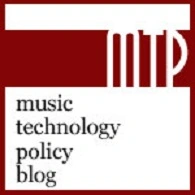Well, it’s been a week of TikTok. One reason is because it doesn’t happen every day that a major label shuts down their catalog on one of the big platforms. The experience highlights some issues that we may not have focused on with clarity in the past, but now become significant and worthy of some thought about how to do it better in the future.
Because if it’s done nothing else, the Universal termination demonstrates that life goes on after TikTok just like before TikTok.
Fans don’t expect you to give up your right to choose your channels or to survive. Based on public information, TikTok wanted Universal to go backwards. ”Backward” includes taking less money on a renegotiation than TikTok paid on the last contract for the same rights, more recordings that UMG released or acquired since the last contract, and a bigger TikTok user base. You (or TikTok) could point to the Tok’s deals with Sony and Warner and rely on the ambiguity that there are contracts in place–that haven’t been renegotiated by TikTok as far as I know. So I would say that it may be the case that TikTok intends to do the same to Sony and Warner that they’re doing to Universal, either now or in the near future. So it’s probably more accurate to say that those labels haven’t had a TikTok problem–yet.
If you are in a situation where the platform like TikTok overplays their hand and is so unreasonable that you have to walk away, it’s not your fault. It’s your right. But it is undoubtedly inconvenient for fans when platforms are impossible to deal with and their use of the music they love to create UGC is disrupted due to business. Particularly when the platform engages in the YouTube tradition of whining and trashing the label brand with auto 404 messages for not giving YouTube what YouTube wants on a rube deal.
And therein lies the rub.
Walking Across the Street
Although TikTok is undoubtedly a big platform, it’s not the only game in town and there are other platforms that are licensed among TikTok’s competitors, particularly YouTube, Facebook, Instagram, and Snapchat.

Of course, YouTube started the trend of putting up messages for fans saying “You can’t get what you want because of these enemies of humanity who refuse to recognize our Big Tech Godhead” or something like that. These messages use the terminating licensor’s branding. I have never understood why the public messaging when tracks are taken down for whatever reason is not a material deal point in any license.
Protecting the Brand
These automatic messages are programmed by the terminated service alone. The copy in the message is written by the service alone. There is never input from and certainly no approval of the terminating licensor.
I find this unusual. For example, these licenses frequently have negotiated rules about mutual approval of press releases, credit, use of brands, display of copyright notices and other public speech. These are widely accepted and largely standard provisions. So if there are rules about some public speech, surely it’s a short step to also include in those rules any automated messages that convey information to the public about the licensor’s exercise of their rights either during or after the term. That licensor approval, especially mutual approval with the licensee, seems quite reasonable particularly if that messaging includes a reference to the licensor or its branding.
It’s entirely justified for license negotiators to require a meeting of the minds about post termination messaging to our fans and their customers when tracks stop becoming available. (We may have driven fans/customers to the platform in the first place for uncompensated customer acquisition cost, but that’s another discussion.)
Points to Consider
Part of that messaging to fans could be suggesting that since that track is no longer available on TikTok (or whoever), go to a platform where it is available on licensed platforms. This is just good consumer information rather than creating the confusing implication that it’s not available on TikTok so it’s not available anywhere. Or the implication that Universal has somehow intentionally wronged the fan discovering music is blocked (likely music the fan is already aware of because of Universal’s efforts off platform).
Then the question is how to convey that information on alternate legal sites in a way that doesn’t become an unreasonable expectation of the terminated service and also doesn’t favor someone else. It seems like one easy way to do this would be to create a page of licensed platforms that excludes the terminated platform and put that link in the “track unavailable” message. An example is the “Why Music Matters” site, but obviously excluding the terminated site as to the catalog concerned.
This will require having control over that message and the right to force a correction if the platform fails to comply.
It may not be that simple for fans to move videos from one platform to another with the music intact, but that should be considered.
Fans don’t expect artists or songwriters to take a rube deal just to keep making tracks available on a platform that doesn’t respect them. But both the platform and the copyright owner should want to make it easy on fans rather than confusing consumers with a self-serving message.
If TikTok wants to explain why a track is no longer available, explain it. It should be easy for fans to get information that they can either stay on TikTok without Universal, or go to a new licensed platform where Universal can make a competitive deal.
TikTok needs to hold the spin. Don’t make it more confusing to consumers.


You must be logged in to post a comment.